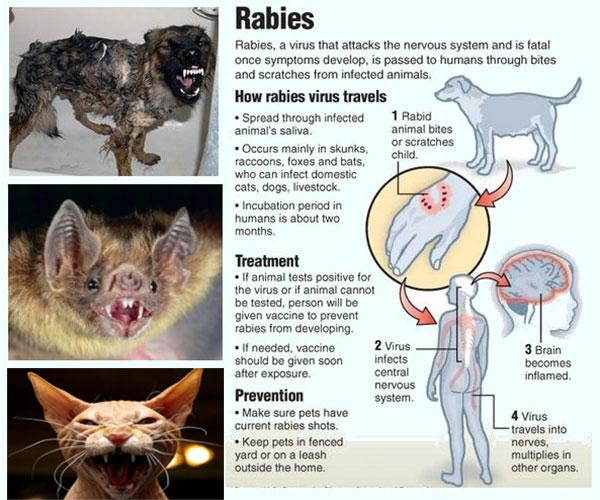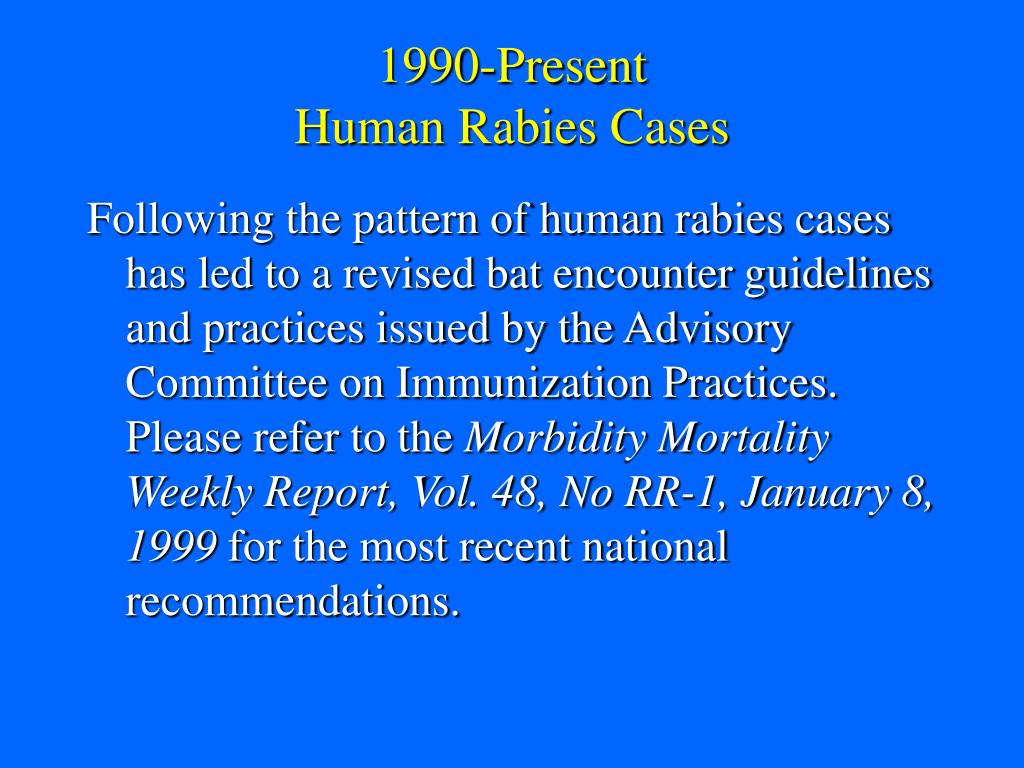Early Signs of Rabies in Humans: A Comprehensive Guide
What are the signs and symptoms of rabies in humans? Discover the early signs, causes, transmission, diagnosis, and treatment of this rare but deadly disease.
Understanding Rabies
Rabies is a rare but serious viral disease that affects the nervous system and brain. It is usually transmitted through a bite from an infected animal, typically wild animals such as raccoons, bats, skunks, and foxes. The rabies virus enters the body through broken skin or the eyes, nose, or mouth, and then travels through the nerves to the brain, where it multiplies and causes inflammation and damage.
Early Signs and Symptoms of Rabies
The first symptoms of rabies can appear anywhere from a few days to more than a year after the initial bite or exposure. The early signs of rabies may include:
- Tingling, prickling, or itching sensation around the bite area
- Flu-like symptoms such as fever, headache, muscle aches, loss of appetite, nausea, and fatigue
After a few days, more severe neurological symptoms may develop, including:
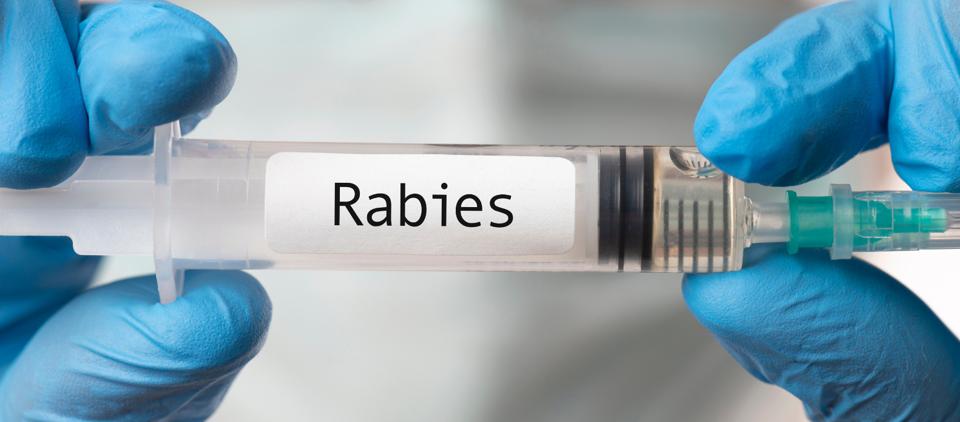
- Irritability or aggressiveness
- Excessive movements or agitation
- Confusion, bizarre or strange thoughts, or hallucinations
- Muscle spasms and unusual postures
- Seizures (convulsions)
- Weakness or paralysis
- Extreme sensitivity to bright lights, sounds, or touch
Individuals with rabies may also produce a lot of saliva, and muscle spasms in their throat can make it difficult to swallow, leading to the “foaming at the mouth” effect that is commonly associated with rabies infection. This can also create a fear of choking or a “fear of water” (another well-known rabies sign).
Causes of Rabies
Rabies is caused by the rabies virus, which is present in the saliva of infected animals. The virus enters the body through broken skin or the eyes, nose, or mouth, and then travels through the nerves to the brain, where it multiplies and causes inflammation and damage.
In the United States, the most common sources of rabies transmission are bites from wild animals such as raccoons, bats, skunks, and foxes. While dogs are the primary source of transmission worldwide, widespread animal vaccination has made transmission from dogs to people rare in the U.S.
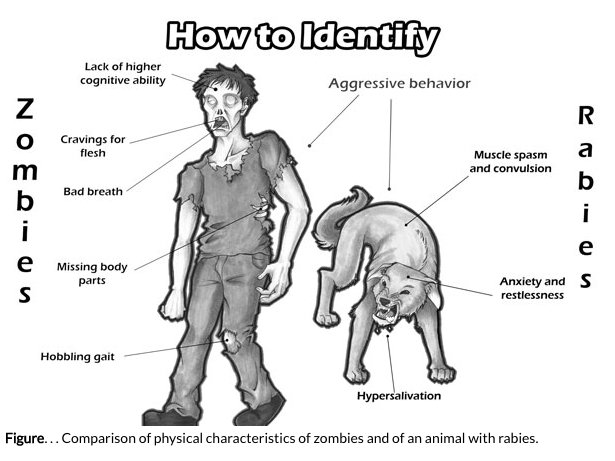
Transmission of Rabies
Rabies is not contagious from person to person. The virus is most often spread through bites from an infected animal, but it can also be transmitted if the animal’s saliva (spit) gets directly into a person’s eyes, nose, mouth, or an open wound (such as a scratch or a scrape).
Small rodents such as hamsters, squirrels, chipmunks, mice, and rabbits are rarely infected with rabies, as they are less likely to be carriers of the virus.
Diagnosing Rabies
There is no immediate way to determine if a wild animal has rabies. When a person is bitten by or exposed to an animal that might be sick, doctors don’t wait for a diagnosis – they treat the exposure right away. Lab tests can check for infection, but the results come later in the disease, when it would be too late to treat.
If a biting animal is caught, it can be tested to see if the rabies virus is present in its brain, but the animal must be euthanized (put to sleep) first. If the animal is a healthy pet, such as a dog, cat, or ferret, experts recommend watching the animal for 10 days to see if it gets sick.
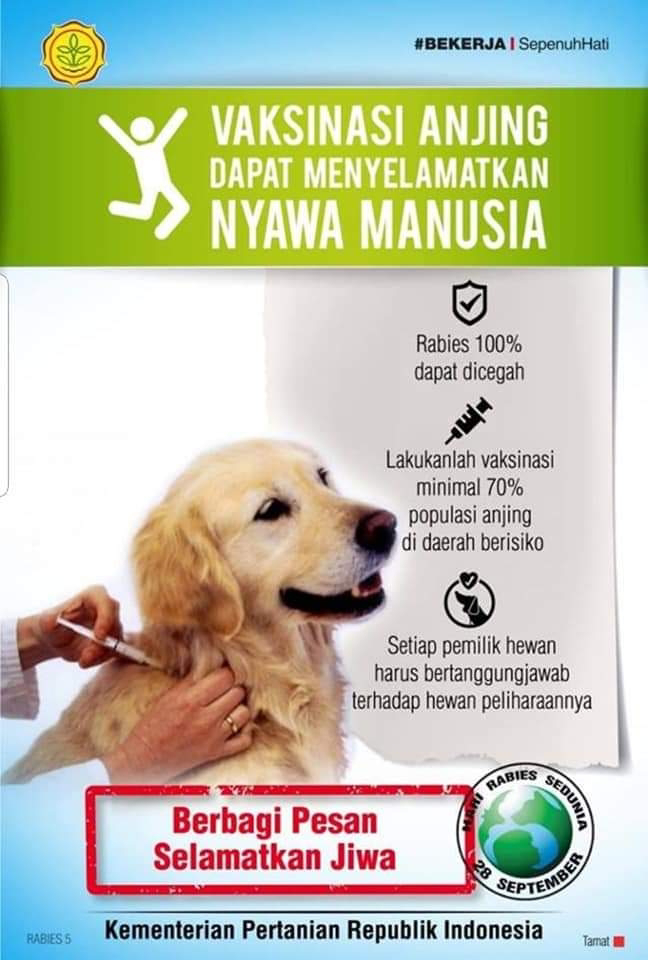
Treating Rabies
If rabies symptoms start to develop, there is no effective treatment. This is why doctors focus on prevention and try to stop the disease right after a person is exposed.
Anyone who thinks they may have been exposed to the rabies virus must get medical care right away. Doctors will administer two shots as soon as possible:
- Rabies immune globulin: This provides immediate protection while the vaccine starts working.
- Rabies vaccine: This is given as a series of four doses, on days 0, 3, 7, and 14 (day 0 is the day of the first dose). People with a weakened immune system get an extra dose on day 28.
Preventing Rabies Exposure
To reduce the chances of rabies exposure, it’s important to:
- Vaccinate your pets
- Report stray animals to your local health authorities or animal-control officer
- Teach children to stay away from wild animals such as bats, raccoons, skunks, and foxes
If a person is bitten by an animal, they should immediately wash the bite area with soap and water, cover it with a clean bandage, and seek medical attention right away. Local animal-control authorities should also be contacted to help find and potentially test the animal for rabies.
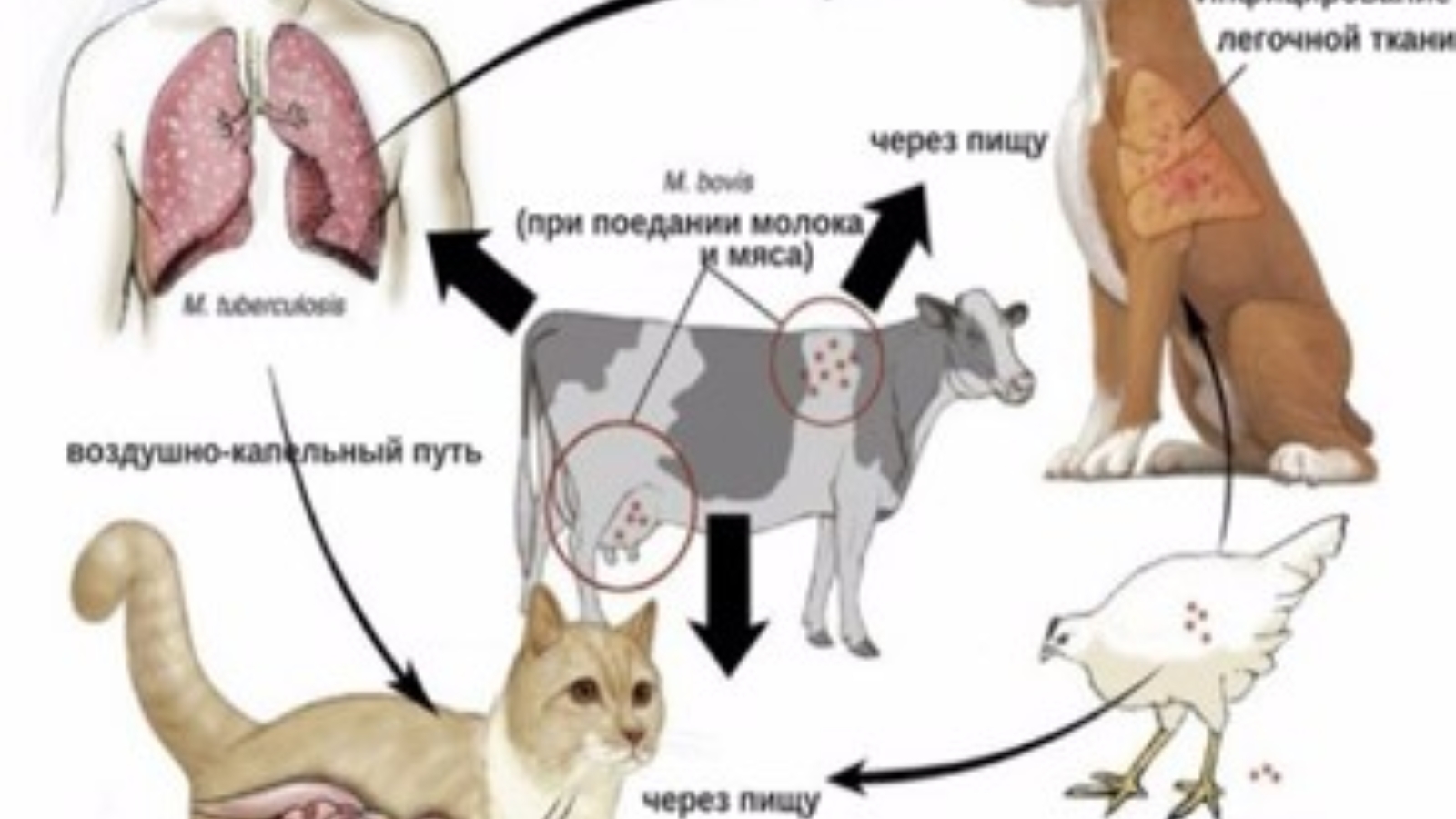
Rabies (for Parents) – Nemours KidsHealth
What Is Rabies?
Rabies is a rare but serious disease caused by a virus. It affects the nerves and brain.
The
virusis usually transmitted by a bite from an infected animal. Rabies can be prevented if the bitten person gets treatment quickly. If a person isn’t treated and develops rabies, it is almost always fatal.
What Are the Signs & Symptoms of Rabies?
The first symptoms of rabies can appear from a few days to more than a year after the bite happens.
At first, there’s a tingling, prickling, or itching feeling around the bite area. A person also might have flu-like symptoms such as a fever, headache, muscle aches, loss of appetite, nausea, and tiredness.
After a few days, neurological symptoms develop, including:
- irritability or aggressiveness
- excessive movements or agitation
- confusion, bizarre or strange thoughts, or hallucinations
- muscle spasms and unusual postures
- seizures (convulsions)
- weakness or paralysis (when a person cannot move some part of the body)
- extreme sensitivity to bright lights, sounds, or touch
Someone with rabies can produce a lot of saliva (spit), and muscle spasms in their throat might make it hard to swallow. This causes the “foaming at the mouth” effect that has long been associated with rabies infection. It also leads to a fear of choking or what seems like a “fear of water,” another well-known rabies sign.
This causes the “foaming at the mouth” effect that has long been associated with rabies infection. It also leads to a fear of choking or what seems like a “fear of water,” another well-known rabies sign.
What Causes Rabies?
Rabies is caused by the rabies virus. Infected animals have the virus in their saliva. The virus enters the body through broken skin or the eyes, nose, or mouth, and travels through nerves to the brain. There it multiplies and causes inflammation and damage.
Bites from a wild infected animal cause most U.S. rabies cases. Raccoons are the most common carriers, but bats are most likely to infect people. Skunks and foxes also can be infected, and a few cases have been reported in wolves, coyotes, bobcats, and ferrets. Small rodents such as hamsters, squirrels, chipmunks, mice, and rabbits are rarely infected. Widespread animal vaccination has made transmission from dogs to people rare in the U.S. In the rest of the world, exposure to rabid dogs is the most common cause of transmission to humans.
Is Rabies Contagious?
Rabies is not contagious from person to person. The virus most often spreads through bites from an infected animal. But it can also spread if the animal’s saliva (spit) gets directly into a person’s eyes, nose, mouth, or an open wound (such as a scratch or a scrape).
How Is Rabies Diagnosed?
There’s no way to know right away if a wild animal has rabies. When a person is bitten by or exposed to an animal that might be sick, doctors don’t wait for a diagnosis — they treat right away. Lab tests can check for infection, but the results come later in the disease, when it would be too late to treat.
A biting animal that’s caught can be tested to see if the virus is in its brain, but it must be euthanized (put to sleep) first. If it’s a healthy pet, such as a dog, cat, or ferret, experts recommend watching the animal for 10 days to see if it gets sick. If it’s a rabbit, rodent, or other small animal that doesn’t usually spread rabies, a doctor can check with the local health department to decide what to do.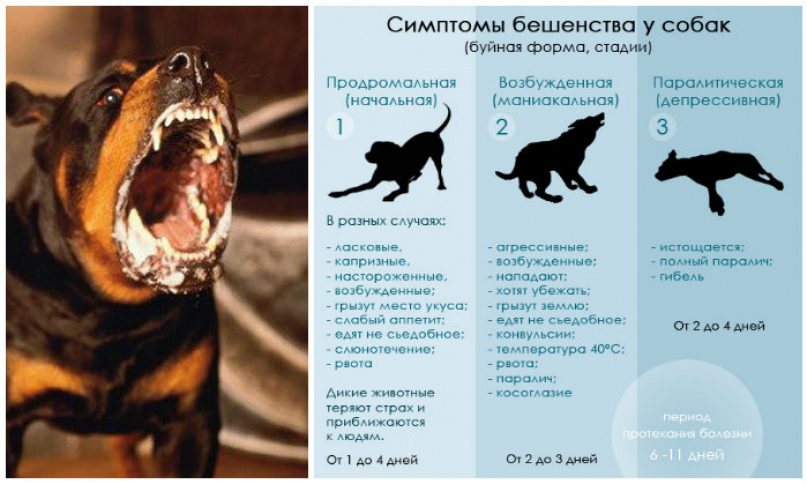
How Is Rabies Treated?
If rabies symptoms start, there is no effective treatment. This is why doctors focus on prevention and try to stop the disease right after a person is exposed.
Anyone who thinks they may have been exposed to the rabies virus must get medical care right away.
Doctors give two shots as soon possible:
- rabies immune globulin: This provides protection right away while the vaccine starts working.
- rabies vaccine: This is given as a series of four doses, on days 0, 3, 7, and 14 (day 0 is the day of the first dose). People with a weakened immune system get an extra dose on day 28.
How Is Exposure to Rabies Prevented?
To reduce the chances of rabies exposure:
- Vaccinate your pets.
- Report stray animals to your local health authorities or animal-control officer.
- Remind kids not to touch or feed stray cats or dogs wandering in the neighborhood or elsewhere.

- Teach kids to stay away from wild animals such as bats, raccoons, skunks, and foxes.
What Else Should I Know?
If your child has been bitten by an animal, especially if it was an unknown dog or wild animal:
- Wash the bite area well with soap and water and cover the bite with a clean bandage.
- Call your doctor right away and go to the nearest emergency department. Anyone with a possible rabies infection must be treated in a hospital.
- Call local animal-control authorities to help find the animal. It may need to be caught and watched for signs of rabies.
- If you know the owner of the animal that bit your child, get all the information you can, including its vaccination status and the owner’s name and address. Notify your local health department, especially if the animal wasn’t vaccinated.
Also call your doctor if:
- Your child was exposed to an animal that might have rabies, but is too young to describe the contact with the animal.

- Your child was exposed to bats, even if there is no bite.
- You plan to travel abroad and may come into contact with wild animals. This is even more important if you’re going to an area with limited access to health care.
Reviewed by: Yamini Durani, MD
Date reviewed: April 2023
Rabies | Cedars-Sinai
ABOUT
CAUSES
DIAGNOSIS
TREATMENT
NEXT STEPS
What is rabies?
Rabies is a preventable, widespread, viral infection of certain
warm-blooded animals. It attacks the nervous system. Once symptoms develop, it is
fatal.
In North America, rabies occurs mainly in skunks, raccoons, foxes,
coyotes, and bats. In some areas, these wild animals infect pet cats and dogs, and
livestock. In the U.S., cats are more likely than dogs to be infected (rabid).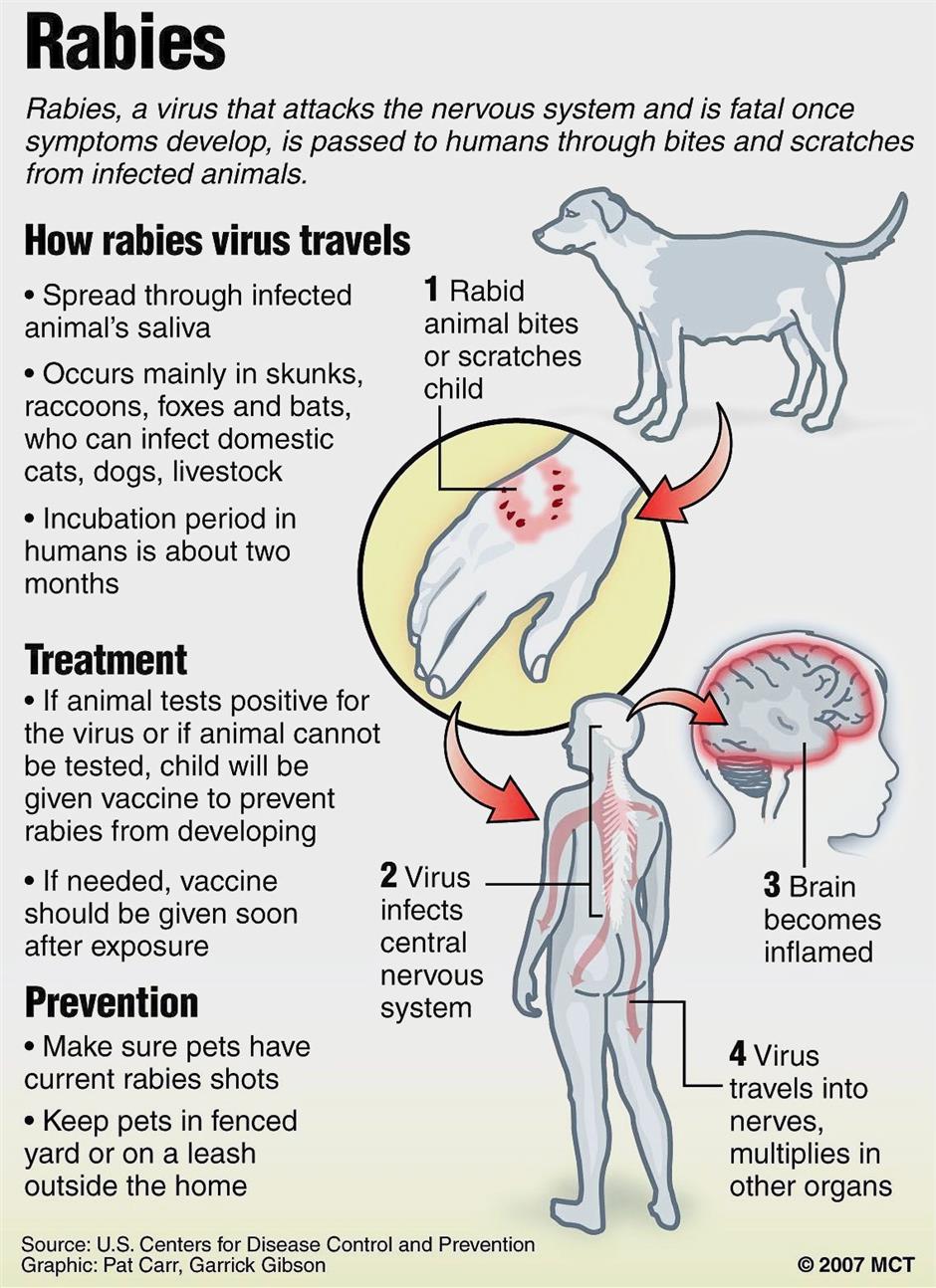
Each state keeps information about animals that may carry rabies.
It’s best to check for specific information in your local area if you aren’t sure
about a certain animal and have been bitten. Generally, rabies is rare in small
rodents. These include beavers, chipmunks, squirrels, rats, mice, or hamsters. It
is also rare in rabbits. The reason for this is that an animal generally has to be
attacked by a rabid animal to contract rabies. Smaller animals are less likely to
survive this type of attack and go on to develop rabies. In the mid-Atlantic states,
rabies is increasing in raccoons. Groundhogs in this area can be infected.
In developing countries, household pets are not often vaccinated
against rabies. People traveling to these countries should talk with their
healthcare provider about getting the rabies vaccine before their trip.
What causes rabies?
The rabies virus enters the body through a cut or scratch. Or it
enters through mucous membranes such as the lining of the mouth and eyes. The virus
then travels to the central nervous system. Once the infection is in the brain, the
virus travels down the nerves from the brain. It multiplies in different organs.
The salivary glands are most important in spreading rabies from
one animal to another. When an infected animal bites another animal, the rabies
virus is spread through the infected animal’s saliva. Scratches by claws of rabid
animals are also dangerous because these animals lick their claws.
Who is at risk for rabies?
Rabies is mainly spread when an infected animal bites a person and
exposes them to infected saliva. In rare cases, rabies has been reported from
nonbite exposures. These include being exposed in labs when the virus is being
These include being exposed in labs when the virus is being
handled. Or by breathing in infectious particles in bat caves. In other rare cases,
the virus has been spread during an organ or tissue transplant from an infected
donor. In the U.S., this risk is reduced because of strict organ and tissue donation
guidelines. And because rabies is extremely rare in humans.
If a person has been bitten by a rabid animal or exposed to
infected tissue or saliva, it is very important to see a healthcare provider right
away. The provider will figure out what treatment is needed.
Petting or handling a rabid animal is not considered an exposure.
Having contact with infected urine, blood, or stool is also not considered an
exposure. Environmental factors such as temperature and sunlight affect how fast the
virus will become inactive. The rabies virus can’t be spread when it dries out and
The rabies virus can’t be spread when it dries out and
when it is exposed to sunlight. Always contact your provider to figure out your
exposure risk and if treatment is needed.
What are the symptoms of rabies?
The time between your exposure to rabies and when the first
symptoms appear (incubation period) can range from 5 days to more than a year. But
the average is about 2 months. Symptoms may include:
| Rabies: Stage 1 | Rabies: Stage 2 |
|
|
The symptoms of rabies may look like other conditions or health
problems. Always see your healthcare provider for a diagnosis.
How is rabies diagnosed?
In animals, the direct fluorescent antibody test (dFA) done on
brain tissue is most often used to detect rabies. In a few hours, diagnostic labs
can figure out if an animal is infected. They provide this information to healthcare
professionals.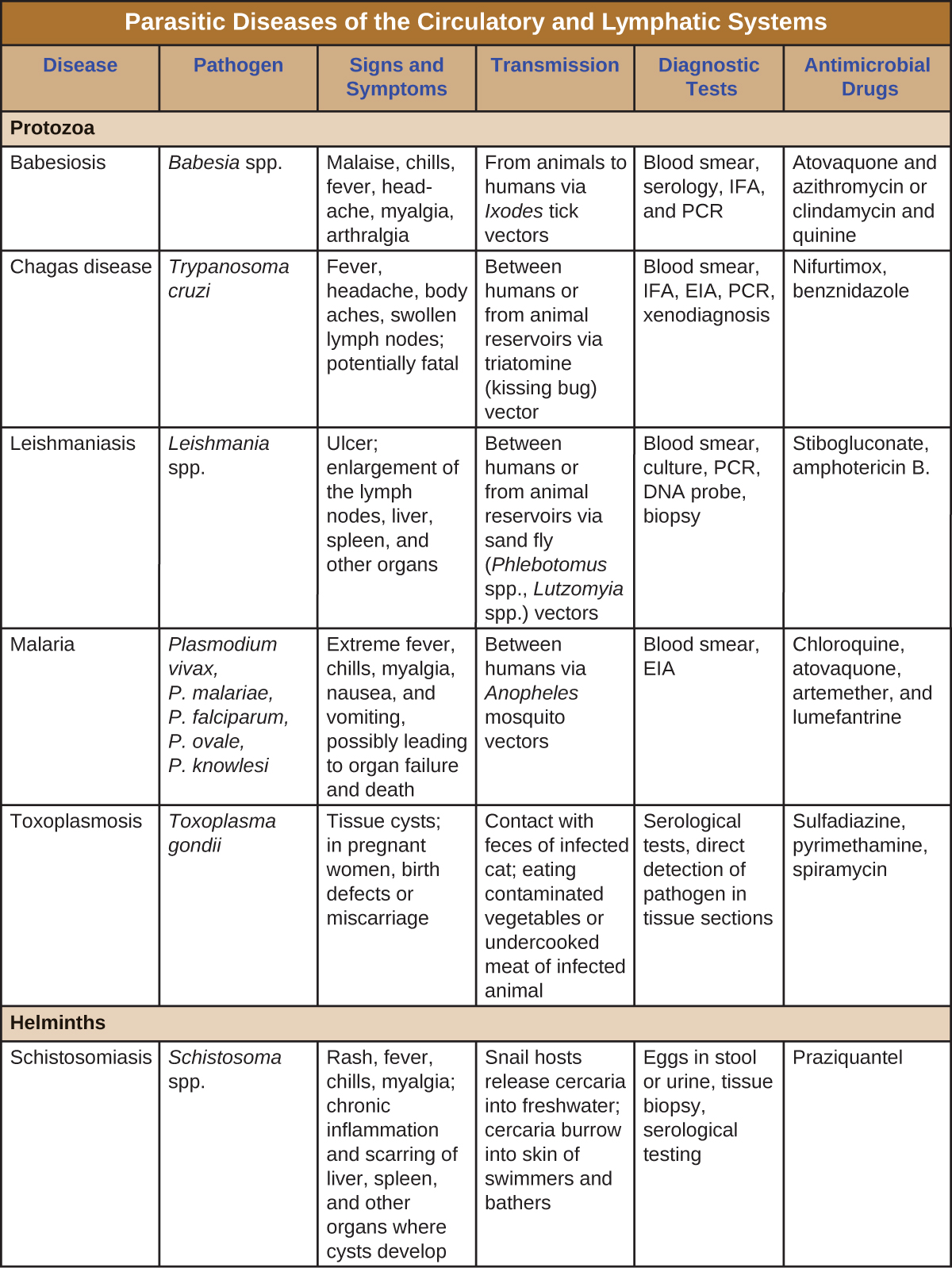 These results may save a person from going through treatment if the
These results may save a person from going through treatment if the
animal is not infected. This can only occur if the animal is known or captured.
Several tests are needed to confirm or rule out rabies in people.
No single test can be used to rule out the disease for sure. Tests are done on
samples of serum, saliva, and spinal fluid. Skin biopsies may also be taken from the
back of the neck.
What is the treatment for rabies?
Unfortunately there is no known, effective treatment for rabies
once symptoms of the disease appear. But there are effective vaccines that provide
immunity to rabies when given soon after an exposure. They may also be used for
protection before an exposure happens. They may be used for people such as
veterinarians and animal handlers.
If you or someone you know is bitten by an animal, get medical
care right away. Remember these facts to report to your healthcare provider:
Remember these facts to report to your healthcare provider:
- Where the incident occurred
- Type of animal (domestic pet or wild animal)
- Type of exposure (cut, scratch, licking of open wound)
- Part of the body affected
- Number of exposures
- If the animal has been immunized against rabies
- If the animal is sick or well (if sick, what symptoms the
animal had) - If the animal is available for testing or quarantine
For bites or puncture wounds from any animal, or for any bite from
a strange animal:
- If the bite or scratch is bleeding, apply pressure to it
with a clean bandage or towel to stop the bleeding. - Wash the wound with soap and water under pressure from a
faucet for at least 5 minutes. Don’t scrub as this may bruise the tissue.
Don’t scrub as this may bruise the tissue. - Dry the wound and cover it with a sterile dressing. Don’t
use tape or butterfly bandages to close the wound. This could trap harmful
bacteria in the wound. - Call your healthcare provider right away for guidance in
reporting the attack. Also find out if more treatment is needed. This includes
antibiotics, a tetanus booster, or rabies vaccine. This is especially important
for bites on the face, hands, or feet, or for bites that cause deeper puncture
wounds of the skin. It is also important for all cat bites that have a high rate
of infection. - If possible, find the animal that caused the wound. Some
animals need to be captured, confined, and watched for rabies. Don’t try to
capture the animal yourself. Contact the nearest animal warden or animal control
Contact the nearest animal warden or animal control
office in your area. - The affected person may need a series of rabies shots and a
dose of rabies immunoglobulin. This may be the case if the animal can’t be found
or is a high-risk animal (raccoon, skunk, or bat). Or if the animal attack
occurred without any cause (was unprovoked).
Call your healthcare provider for any flu-like symptoms following
an animal bite. This includes fever, headache, general feeling of discomfort
(malaise), decreased appetite, or swollen glands.
What are possible complications of rabies?
Once symptoms of rabies start, rabies most often leads to
death.
Can rabies be prevented?
Being safe around animals, even your own pets, can help reduce the
risk of rabies.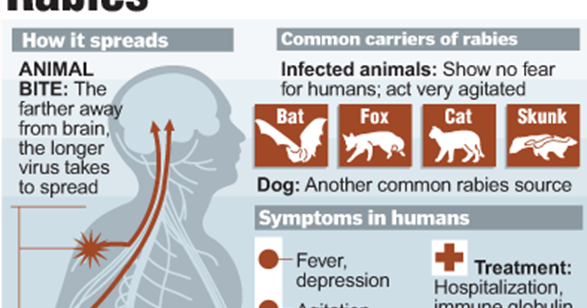 Some general guidelines include the following:
Some general guidelines include the following:
- Don’t go up to or play with wild animals of any kind. Know
that pets may also be infected with the rabies virus. - Watch pets so they don’t come into contact with wild
animals. Call your local animal control agency to remove any stray animals. - Don’t try to separate fighting animals.
- Stay away from strange and sick animals.
- Leave animals alone when they are eating.
- Keep pets on a leash when out in public.
- Choose family pets carefully.
- Never leave a young child alone with a pet.
- Leave all wildlife alone, including injured animals. Teach
children to do the same. Contact local animal control officers for assistance.
Never touch an injured animal.
- Immunize all pet dogs and cats against rabies and keep shots
current. - Make sure your animals wear rabies vaccine tags with the
vaccine history, name, and your contact information. - Before traveling to countries where rabies is more common,
check with your healthcare provider. Ask about the best strategy for rabies
prevention.
When should I call my healthcare provider?
Call your healthcare provider right away if you have any of
these:
- A bite or scratch from a wild animal that has broken the
skin. This might be from a raccoon or skunk. - A bite or scratch from a pet animal that has broken the
skin, and you can’t be sure that it has had a current rabies vaccine.
- You or your child may have been scratched or bitten by a
bat. Bites and scratches from bats may not be noticed, especially by
children.
Key points about rabies
- Rabies is a viral infection of certain warm-blooded
animals. It attacks the nervous system. Once symptoms develop, it is
fatal. - In North America, rabies occurs mainly in skunks,
raccoons, foxes, coyotes, and bats. In some areas, these wild animals infect
pet cats and dogs, and livestock. - Rabies is mainly spread when an infected animal bites a
person and exposes them to infected saliva. - If you or someone you know is bitten by an animal, get
medical care right away.
- Several tests are needed to confirm or rule out rabies
in people. No single test can be used to rule out the disease for sure. - There is no known, effective treatment for rabies once
symptoms of the disease appear. But there are effective vaccines that
provide immunity to rabies when given soon after an exposure.
Next steps
Tips to help you get the most from a visit to your healthcare
provider:
- Know the reason for your visit and what you want to
happen. - Before your visit, write down questions you want
answered. - Bring someone with you to help you ask questions and
remember what your provider tells you. - At the visit, write down the name of a new diagnosis, and
any new medicines, treatments, or tests. Also write down any new instructions
Also write down any new instructions
your provider gives you. - Know why a new medicine or treatment is prescribed, and how
it will help you. Also know what the side effects are. - Ask if your condition can be treated in other ways.
- Know why a test or procedure is recommended and what the
results could mean. - Know what to expect if you do not take the medicine or have
the test or procedure. - If you have a follow-up appointment, write down the date,
time, and purpose for that visit. - Know how you can contact your provider if you have
questions.
Medical Reviewer: Eric Perez MD
Medical Reviewer: Marianne Fraser MSN RN
Medical Reviewer: Maryann Foley RN BSN
© 2000-2022 The StayWell Company, LLC.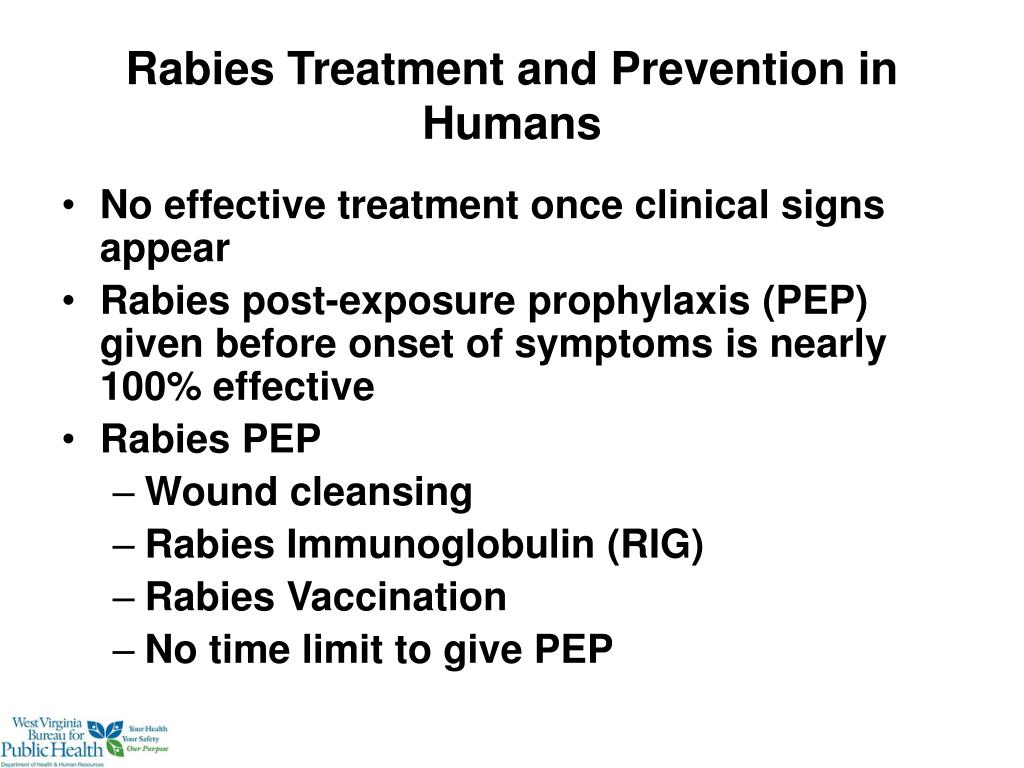 All rights reserved. This information is not intended as a substitute for professional medical care. Always follow your healthcare professional’s instructions.
All rights reserved. This information is not intended as a substitute for professional medical care. Always follow your healthcare professional’s instructions.
Rabies
Rabies
- Health Issues »
- A
- B
- C
- D
- D
- E
- Y
- W
- W
- I
- R
- L
- M
- H
- O
- P
- R
- S
- T
- U
- F
- X
- C
- H 900 05
- W
- W
- b
- S
- B
- E
- S
- I
- Popular Topics
- Air pollution
- Coronavirus disease (COVID-19)
- Hepatitis
- Data and statistics »
- News bulletin
- The facts are clear
- Publications
- Find country »
- A
- B
- C
- D
- L
- E
- Y
- W
- W
- Y
- Y
- K
- M
- H
- O
- R
- R
- S
- T
- U
- F
- X
- C
- H
- W
- W
- b
- B
- E
- S
- I
90 004 L
90 004 S
- WHO in countries »
- Reporting
- Regions »
- Africa
- America
- Southeast Asia
- Europe
- Eastern Mediterranean
- Western Pacific
- Media Center
- Press releases
- Statements
- Media messages
- Comments
- Reporting
- Online Q&A
- Events
- Photo reports
- Case Studies
- Questions and answers
- Speeches
- Update
- Emergencies ”
- News ”
- Disease Outbreak News
- WHO data »
- Dashboards »
- COVID-19 Monitoring Dashboard
- Basic moments ”
- About WHO »
- CEO
- About WHO
- WHO activities
- Where does WHO work?
- Governing Bodies »
- World Health Assembly
- Executive committee
- Main page/
- Media Center /
- Newsletters/
- Read more/
- Rabies
Friedrich Loeffler Institute (FLI)
Namibia utilises One Health for rabies control including oral rabies vaccines for dogs
©
Photo
Key Facts
- Rabies is a vaccine-controlled viral disease that occurs in more than 150 countries and territories.
 Tens of thousands of people die from it every year, mostly in Asia and Africa, with 40% of the deaths occurring in children under the age of 15.
Tens of thousands of people die from it every year, mostly in Asia and Africa, with 40% of the deaths occurring in children under the age of 15. - Most human deaths from rabies result from contact with dogs, which account for up to 99% of all human transmission of rabies. Rabies can be prevented by vaccinating dogs and preventing dog bites.
- After exposure to a potentially rabies-infected animal, a victim may seek life-saving post-exposure prophylaxis (PEP) services that include washing the wound with copious amounts of soap and water for 15 minutes, prophylaxis with rabies vaccine, and, if available, indications – the introduction of anti-rabies immunoglobulin or monoclonal antibodies.
- The economic burden of rabies in the world is estimated at $8.6 billion per year.
- A comprehensive One Health approach ensures the participation of various sectors and local communities in raising public awareness of the problem and conducting mass dog vaccination campaigns.

General information
Rabies is a vaccine-controlled zoonotic viral disease that affects the central nervous system. At the stage of the onset of clinical symptoms, its mortality is 100%. Transmission of the rabies virus to humans at almost 99% of cases are from
domestic dogs. At the same time, rabies can affect not only domestic animals, but also wild animals. Infection is transmitted to humans and animals through saliva, usually through bites, scratches, or direct contact with mucous membranes (eg, eyes, mouth
or open wounds). Rabies often affects children between the ages of five and 14.
Rabies is present on every continent except Antarctica, with 95% of human deaths occurring in Asia and Africa. However, rabies cases are rarely reported and reported rates vary widely.
from estimated rabies burden parameters.
Rabies is a neglected tropical disease (NTD) that predominantly affects poor and vulnerable populations who are already marginalized./hypothermia-symptoms2-5ad4bb0fc6733500379fc89b.png) Although for the prevention of rabies in humans can be effective
Although for the prevention of rabies in humans can be effective
vaccines and immunoglobulins are used, they are not always available or accessible to those in need. Given that the average cost of a course of post-exposure prophylaxis (PEP) for rabies is currently estimated at $108 (in addition to travel expenses and lost income), such treatment often places a catastrophic financial burden on affected families,
whose daily income averages 1-2 US dollars per person.
More than 29 million people receive PEP services after animal bites every year. This is estimated to prevent hundreds of thousands of rabies deaths each year. The global economic burden of dog-borne rabies
estimated at $8.6 billion per year, excluding the unmeasured burden of psychological trauma experienced by those affected and those around them.
Prevention
Rabies elimination in dogs
Rabies is a vaccine-preventable disease. The most cost-effective strategy to prevent rabies in humans is to vaccinate dogs, including puppies, as this stops transmission at the source. Vaccination
Vaccination
dogs also reduces the need for AEDs.
An important step after the implementation of the rabies vaccination program is to inform the public about the behavior of dogs and the prevention of bites in children and adults, as this helps to reduce both the incidence of rabies in humans,
and the financial burden associated with treating dog bites.
Immunization of humans
Highly effective vaccines can be used to immunize humans both after exposure to rabies (under REP) and before. Pre-exposure prophylaxis (PrEP) is recommended for individuals at high risk by occupation (in
in particular laboratory assistants who manipulate live rabies virus and related viruses), as well as persons who, in the course of their professional or private activities, may come into direct contact with bats
or other potentially rabies-infected mammals (particularly veterinarians and rangers).
PrEP may also be indicated for ecotourism enthusiasts and residents of remote, highly endemic areas for rabies with limited availability of anti-rabies biologics.
Symptoms
The incubation period for rabies is usually 2-3 months, but can vary from a week to a year depending on factors such as where the virus enters the body and the viral load. The initial symptoms of rabies include non-specific
manifestations in the form of fever, pain and an unusual or inexplicable sensation of tingling, stinging or burning at the site of the wound. As the virus enters the central nervous system, progressive lethal inflammation develops
brain and spinal cord. At the stage of the onset of clinical signs, rabies is amenable to symptomatic treatment to alleviate the patient’s condition, but is extremely rarely cured and even in this case leads to severe neurological disorders.
There are two forms of rabies:
- Violent rabies manifests itself in the form of hyperactivity, agitation, hallucinations, lack of coordination, hydrophobia (fear of water) and aerophobia (fear of drafts or fresh air). Death occurs after a few days as a result of stopping
cardiopulmonary activity.
- Paralytic rabies accounts for about 20% of all human cases. This form of rabies is less severe and usually longer than the violent form. It is characterized by the gradual development of muscle paralysis starting from the site of the wound. Slowly
coma develops and eventually death occurs. Paralytic rabies is often misdiagnosed, contributing to underreporting of the disease.
Diagnostics
Currently available diagnostic tools are not suitable for detecting rabies infection before the onset of clinical symptoms of the disease. In the absence of specific signs of rabies in the form of hydrophobia or aerophobia or reliable
information about contact with an animal with suspected rabies or confirmed infection, making a diagnosis based on clinical signs is difficult. Intravital and post-mortem confirmation of rabies in humans can be carried out using
various diagnostic techniques aimed at detecting the whole virus, viral antigens or nucleic acids in infected tissues (brain, skin or saliva).
- Rabies Laboratory Diagnostic Methods Volume 1 and Volume 2
Transmission
Infection to humans usually occurs as a result of a deep bite or scratch inflicted by a rabid animal, which in 99% of cases is a dog. Transmission can also occur through direct contact of the saliva of an infected
an animal with mucous membranes (such as the eyes or mouth) or fresh wounds on human skin.
In the Americas, most human deaths from rabies are now due to infection from vampire bats, as transmission from dogs in this region has largely been interrupted. rabies transmitted
bats is also a growing threat to human health in Australia and Western Europe.
Human deaths from contact with foxes, raccoons, skunks, jackals, mongooses and other wild carnivorous species that carry rabies are very rare, and evidence of rabies transmission through
rodent bites are absent.
Extremely rare cases of rabies infection have also been described by inhalation of virus-containing aerosols or by transplantation of infected organs. Transmission of infection from person to person through a bite or with saliva is theoretically possible,
Transmission of infection from person to person through a bite or with saliva is theoretically possible,
but it has never been confirmed. The same applies to human infection through consumption of raw meat or milk from infected animals.
Post-exposure prophylaxis (PEP)
Post-exposure prophylaxis (PEP) is an emergency response to rabies virus exposure. It helps prevent the virus from entering the central nervous system, which inevitably leads to death. PEP is
next:
- wash the wound with copious amounts of soap and water for at least 15 minutes and treat the wound locally as soon as possible after suspected exposure;
- a course of immunization with a powerful and effective rabies vaccine according to WHO standards; and
- if indicated, an injection of rabies immunoglobulin or injection of monoclonal antibodies into the wound.
Exposure risk and indications for AEDs
Depending on the degree of contact with an animal suspected of being infected with rabies, a full AED regimen may be recommended as indicated below.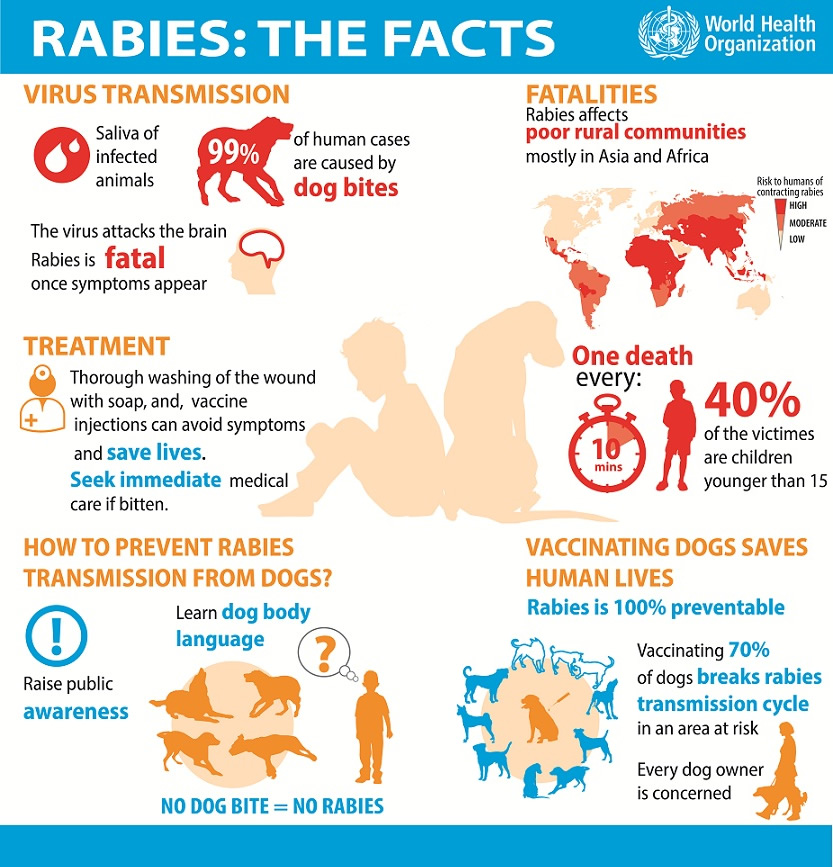
| Categories of exposure and recommended post-exposure prophylaxis (PEP) measures | |
|---|---|
| Categories of exposure to suspected rabid animals | 9 0298 Post-exposure prophylaxis measures |
| Category I – touching animals or feeding them, licking intact skin by animals (no exposure) | Washing of exposed skin, AED not required |
| Category II – pressure on exposed skin, minor scratches or abrasions without bleeding (exposure) | Wound cleansing and emergency vaccination |
| Category III – single or multiple transdermal bites or scratches, licking of broken skin, contamination of mucous membranes with saliva from licking, exposure from direct contact with bats (intense exposure) | Wound lavage, emergency vaccination and administration of rabies immunoglobulin/monoclonal antibodies |
PEP is required for category II or III contacts.
WHO recommends intradermal administration of rabies vaccines as it reduces the quantity and therefore the cost of the vaccine needed by 60–80% without compromising its safety or effectiveness.
WHO activities
Rabies is covered by the WHO Roadmap for Neglected Tropical Diseases 2021–2030, which sets targets for regional elimination of a number of priority diseases. To the number
rabies is also included in these diseases. Given the zoonotic nature of this disease, rabies control must be carried out through close interagency cooperation at the national, regional and global levels.
- WHO, the Food and Agriculture Organization (FAO) and the World Organization for Animal Health (OIE, originally OIE) have created the Unite Against Rabies Forum (UBR), a multi-stakeholder platform designed to galvanize action against rabies and resource mobilization for these purposes.
- Rabies control interventions can go a long way towards building human capacity within the framework of One Health.

- WHO is working with a number of partners to provide guidance and support to countries in the development and implementation of national rabies elimination plans, but there is a lack of data in this area.
Strengthening surveillance, improving the quality of data recording and monitoring of rabies control programs remain priorities. - WHO develops technical guidance on rabies control and promotes capacity building in countries.
- In 2019, the GAVI Alliance included human rabies vaccines in its Vaccine Supply Investment Strategy 2021-2025, which will support greater adoption of AEDs in countries
meeting the GAVI criteria. Currently, the implementation of the strategy has been suspended due to the COVID-19 pandemic.
The following principles play a key role in implementing effective rabies elimination programs: build dialogue with local communities, start small, increase long-term investment through comprehensive incentive measures,
involve government agencies, demonstrate the success and cost-effectiveness of programs and rapidly scale them up.
Elimination of rabies is realistic and achievable if this goal is given priority attention, financial and political support.
Roadmap for Neglected Tropical Diseases 2021–2030
Rabies eradication in India through education, treatment and vaccination
Rabies in humans: symptoms, signs, treatment
Contact with aggressive wild or domestic animals carries the risk of contracting rabies. This extremely dangerous disease is caused by the Rabies virus, which infects the cells of the human nervous system and brain. In the active phase, it proceeds quickly and with severe symptoms, and the probability of death is almost 100% in the absence of preventive measures.
General information about the exciter
The reservoir for the virus is wild and stray animals, mostly predators, some species of rodents, as well as horses and livestock. The main means of transmission of the virus is the saliva of the animal, the method of infection is the bite of a human animal. The infection does not develop in every case: with a bite of a limb, the risk of developing the disease is about 23%, and in case of damage to the neck or face, it reaches 90%.
The infection does not develop in every case: with a bite of a limb, the risk of developing the disease is about 23%, and in case of damage to the neck or face, it reaches 90%.
Penetrating into the human body, the virus spreads along the nerve fibers, it can also be carried by the blood and lymph flow. It destroys nerve cells and in their place leaves specific formations called Babesh-Negri bodies. After some time, the virus reaches the brain, in which it causes an inflammatory process characterized by severe symptoms. Due to the degeneration of nerve fiber cells, functional disorders of internal organs and systems develop.
In the external environment, the virus remains poorly viable. It instantly dies under direct sunlight and when dried, within ten minutes – when heated to 60 ° C. Gastric juice destroys it within 20 minutes, alcohol and other disinfectants – almost instantly. At low temperatures, the virus can survive for several weeks, but loses its virulence.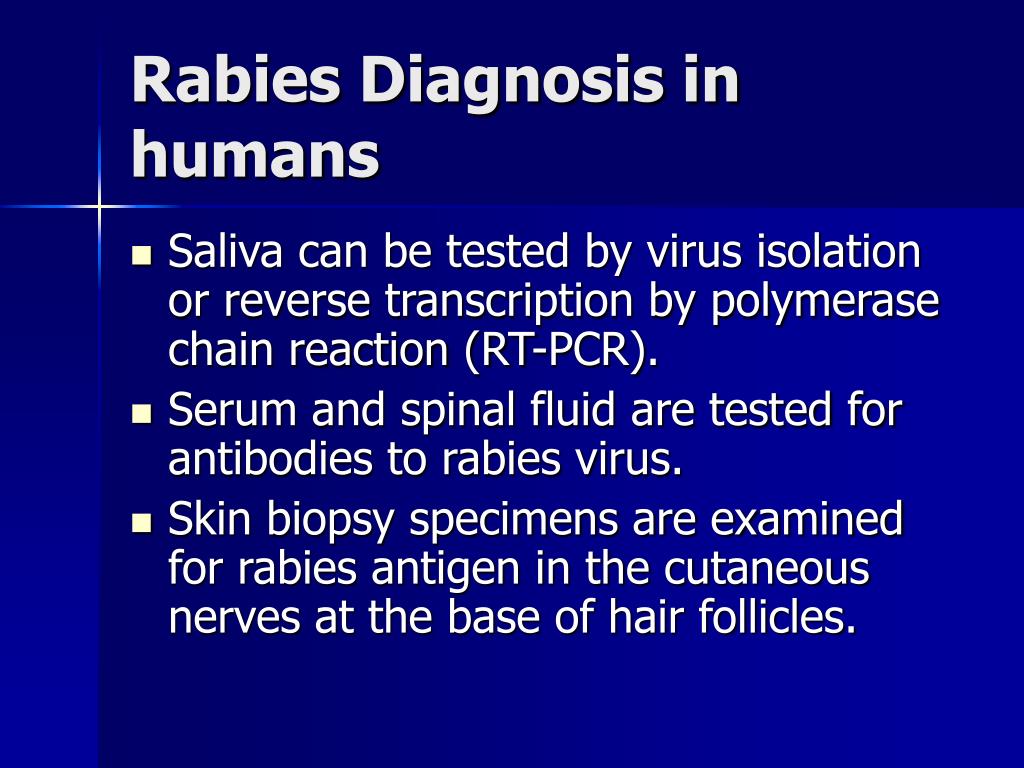
External manifestations of the disease
The incubation period for rabies infection can range from 1.5 weeks to 3 months, depending on the location of the bite site and the depth of penetration of the saliva of the infected animal. With multiple bites to the head and neck, the disease develops quickly, with a single injury to the leg, as a rule, signs of rabies in a person appear after 2-3 months.
In the development of the disease, the following periods are clearly traced:
- incubation during which there are no symptoms of rabies;
- prodromal, characterized by slight fever, sleep disturbances, depressed or restless behavior, itching in the area of the bite;
- aggressive, characterized by hypersensitivity to external stimuli, rabies, delirium and inappropriate behavior;
- paralytic, with drooping of the lower jaw, unnatural appetite and degradation of the patient’s personality.
Then comes paralysis of the respiratory tract, ending, as a rule, with the death of the patient.
In some cases, patients do not have a prodromal stage, and sometimes the first symptoms of rabies in humans appear with the development of paralysis. Because of this, doctors do not have time to determine the disease in time and provide the necessary assistance. Therefore, in case of any animal bites, you should immediately consult a doctor. Delay can lead to irreversible consequences.
Diagnostic methods
In the case when the patient went to the doctor immediately after contact with an aggressive animal, an external examination of the bite site is of great importance. The doctor determines the characteristic features of the wounds, the depth of tissue puncture with the teeth of the animal, assesses the degree of salivation. All this is necessary to determine the estimated duration of the incubation period.
Upon further observation, the doctor notes the presence of visual signs of rabies – changes in behavior, pupil size, etc. Laboratory diagnostics is not carried out in ordinary clinics, since almost all tests are specific and can only be performed in laboratories that study dangerous infections. Intravital studies are usually useless, as their results appear too late. Currently, physicians can:
Intravital studies are usually useless, as their results appear too late. Currently, physicians can:
- determine viral antigens in the skin biopsy of the occipital region using the method of fluorescent antibodies;
- starting from the seventh day of illness to determine the presence of antibodies to the virus;
- perform PCR test of cerebrospinal fluid.
Most often, in the absence of severe symptoms of rabies in a person and too late seeking medical help, it is necessary to perform post-mortem studies in order to reliably establish the cause of death:
- histological analysis of brain tissue to detect Babes-Negri bodies;
- infection of laboratory animals with saliva taken from a person, and in case of their death – detection of Babes-Negri bodies in the brain tissue;
- PCR and ELISA studies of corneal and brain tissues, as well as saliva.
These methods allow you to establish rabies as the cause of the disease with 100% accuracy.
Modern methods of treatment
After the appearance of obvious symptoms, effective treatment of rabies becomes impossible, the efforts of doctors are aimed only at reducing the suffering of the patient. He is prescribed anticonvulsant and hypnotic drugs, placed in a darkened room with good sound insulation, painkillers and tranquilizers are administered. Currently, scientists are testing new methods based on the use of specific immunoglobulins, intensive care, and brain hypothermia. However, at the current level of development of medicine, after the appearance of clinical symptoms, a lethal outcome occurs in all cases.
Under these conditions, rabies prevention is of vital importance, which consists not only in vaccinating healthy people, but also in the mandatory implementation of a set of measures for animal bites:
- deep and thorough washing of wounds with rubbing alcohol;
- treatment of wounds with antiseptic preparations;
- conducting a course of anti-rabies vaccination using a dry anti-rabies vaccine and anti-rabies immunoglobulin.

The scheme for administering the vaccine and immunoglobulin in each case is determined individually, depending on the site of the bites, the severity of the wounds and the degree of salivation. With the implementation of all these measures, the probability of the disease can be reduced to almost zero.
Frequently Asked Questions
How is rabies transmitted from person to person?
Theoretically, the transmission of the virus from one person to another is possible through a kiss, if the patient already has it in saliva, and the healthy one has wounds in the mouth. However, in practice, such cases are not known to medicine. It is possible to infect the fetus from an infected mother during pregnancy, as well as to donors during organ transplantation, but these cases are extremely rare.
Can rabies be transmitted by scratching a cat?
Infection is possible with:
- injury to the skin by the claws of an infected animal;
- contact of the damaged area of the skin with the saliva of a sick animal;
- salivation by sick animals of the mucous membrane of the mouth, nose or eyes of a person;
- cutting the carcass of an infected animal without special clothing and protective equipment;
- airborne contact in a dark, damp environment (for example, in a cave that serves as a habitat for infected bats).




 Even the sight of water may
Even the sight of water may Don’t scrub as this may bruise the tissue.
Don’t scrub as this may bruise the tissue. Contact the nearest animal warden or animal control
Contact the nearest animal warden or animal control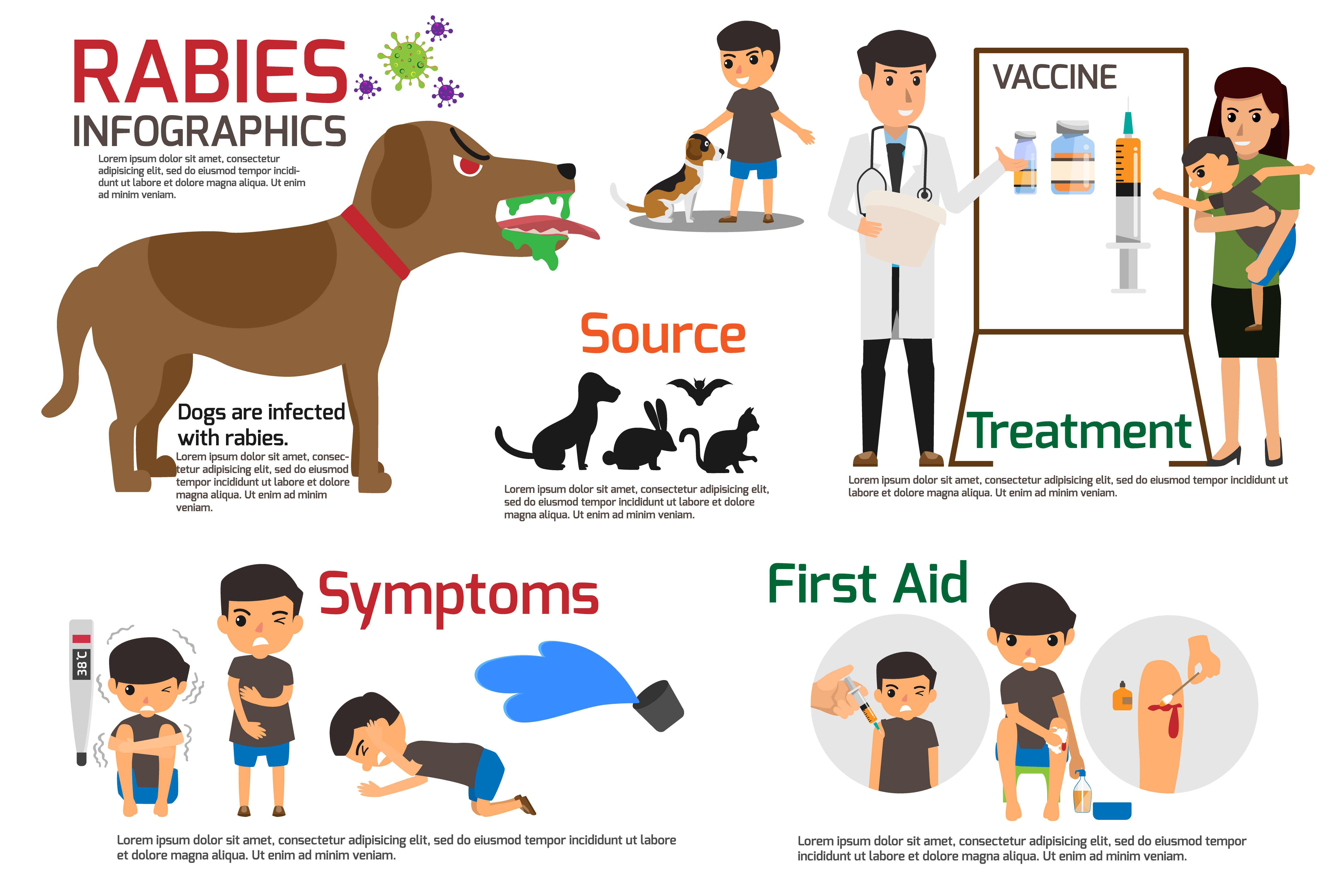

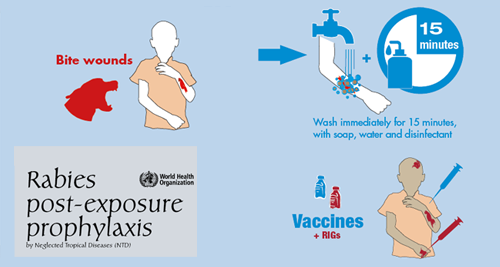
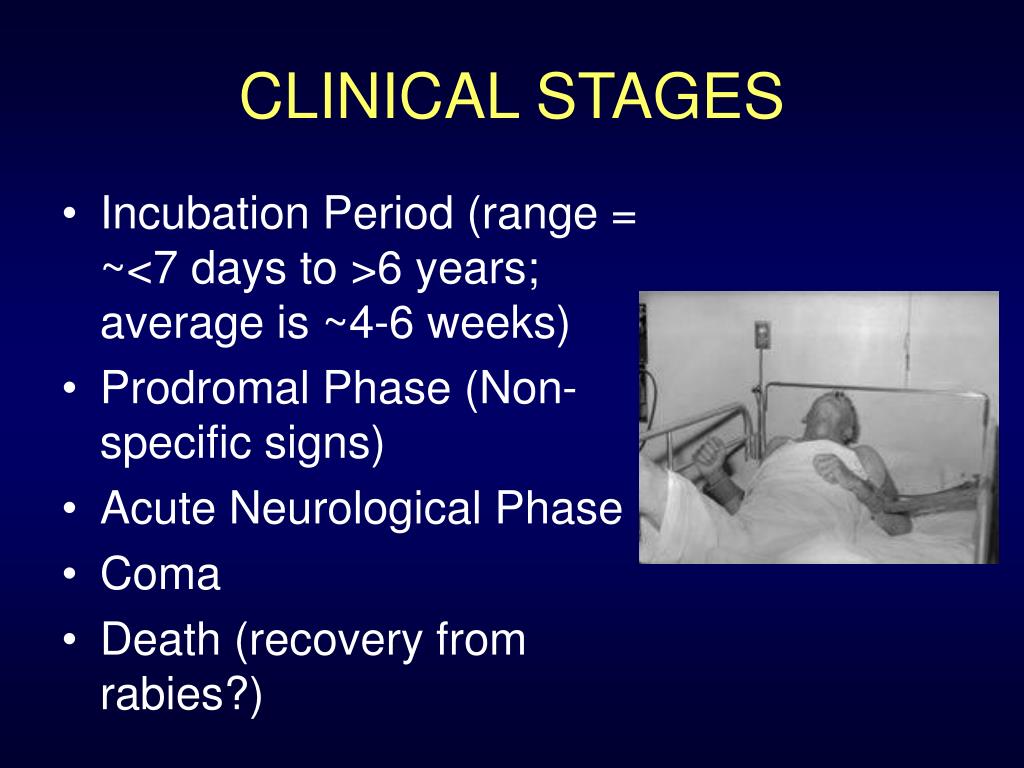 Also write down any new instructions
Also write down any new instructions Tens of thousands of people die from it every year, mostly in Asia and Africa, with 40% of the deaths occurring in children under the age of 15.
Tens of thousands of people die from it every year, mostly in Asia and Africa, with 40% of the deaths occurring in children under the age of 15. 
